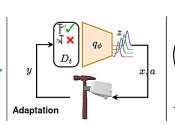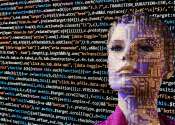Researchers use machine learning to detect defects in additive manufacturing
Researchers at the University of Illinois Urbana-Champaign have developed a new method for detecting defects in additively manufactured components.
Jun 4, 2024
0
48
Engineering

Researchers at the University of Illinois Urbana-Champaign have developed a new method for detecting defects in additively manufactured components.
Jun 4, 2024
0
48
Robotics

When robots come across unfamiliar objects, they struggle to account for a simple truth: Appearances aren't everything. They may attempt to grasp a block, only to find out it's a literal piece of cake. The misleading appearance ...
Jun 4, 2024
0
82
Robotics

Let's say you want to train a robot so it understands how to use tools and can then quickly learn to make repairs around your house with a hammer, wrench, and screwdriver. To do that, you would need an enormous amount of ...
Jun 3, 2024
0
46
Automotive

As more and more people drive electric cars, congestion and queues can occur when many people need to charge at the same time. A new study from Chalmers University of Technology in Sweden shows how AI-controlled charging ...
May 31, 2024
0
1
Machine learning & AI

AI and its related terms are now fairly well known. Many people have heard of terms such as "neural network" and may even associate "CNN" with "Convolutional Neural Network" instead of the news organization. Those with more ...
May 31, 2024
0
3
Internet

Google said Friday it has made "more than a dozen technical improvements" to its artificial intelligence systems after its retooled search engine was found spitting out erroneous information.
May 31, 2024
0
22
Business

A new study published in the journal Cell Reports Sustainability focuses on the air quality and climate benefits of wind and solar energy.
May 31, 2024
0
43
Computer Sciences

Recently, stories about AI have been leading the news, including deals about publications licensing their content, or content errors made by AI. Now, a new paper by computer science Ph.D. student Kai Chen, Professor Kristina ...
May 31, 2024
0
7
Automotive

Tesla is recalling more than 125,000 vehicles to fix a seat belt warning system that may increase the risk of an injury in a collision.
May 31, 2024
0
16
Engineering

Researchers have developed a system to address risks caused by liquefaction and subsidence, two soil deformation events triggered by earthquakes that cause buildings to tilt and sink. The team includes Professor Shinya Inazumi ...
May 30, 2024
0
16
A model (from Middle French modèle), sometimes called a mannequin, is a person who is employed for the purpose of displaying and promoting fashion clothing or other products and for advertising or promotional purposes or who poses for works of art.
Modeling is distinguished from other types of public performance, such as an acting, dancing or mime artistry, although the boundary is not well defined. Appearing in a movie or a play is generally not considered to be modeling, regardless of the nature of the role. However, models generally have to express emotion in their photographs, and many models have also described themselves as actors. Models are generally not expected to verbally express themselves unless to visually enhance a photograph through the display of intense emotion.
Types of models include fashion, glamour, fitness, bikini, fine art, and body-part models.
Not all models are what would commonly be considered "beautiful": character models portray ordinary people and humorous types, mostly in print work and in commercials. Photo manipulation and cosmetic surgery also enable people with body imperfections to model and change their looks to suit a certain role. Many high fashion models have what could be called 'quirky' attributes and memorably unusual faces. High end brands often use these unusual faces as people are likely to remember their brand name and associate it with an interesting face.
Various representations of beauty and fashion using models have caused controversy and is known to have some social impact, particularly on young people - both male and female.
Male models receive overall less publicity and are often paid less than female models.
This text uses material from Wikipedia, licensed under CC BY-SA